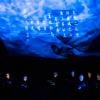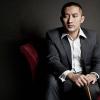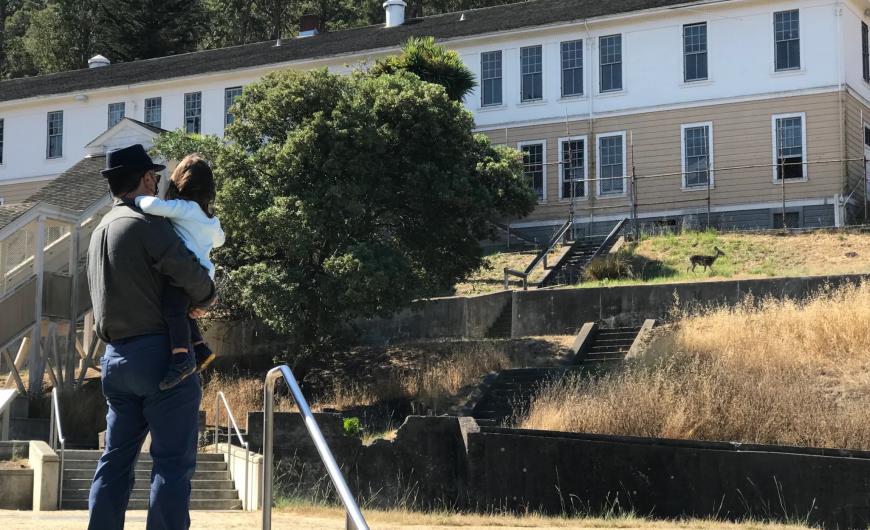
Today, Angel Island is home to abundant natural beauty. But a dark, lesser-known history of racial discrimination is still there to see.
In the early 20th century, the government station in San Francisco Bay processed and detained immigrants from the Pacific, mostly of Chinese origin, along with Korean, Japanese, and Russian people — including, briefly, the renowned composer Sergei Prokofiev. As San Francisco’s Del Sol Quartet has discovered, this is a natural setting for chamber music, so this year, the ensemble launched its Angel Island Concert Series. Each event explores the intersection of history, culture, and untold immigrant stories in performances from within the station’s detention barracks.
The chamber series — the first of its kind on Angel Island — particularly aims to amplify the voices of different cultural groups detained there through a musical reflection on migration and identity. Following a successful inaugural outing in March, the quartet is now preparing for its next concert on Angel Island, scheduled for Saturday, Sept. 14.
“This is such an important place, historically and culturally,” said Del Sol violist Charlton Lee. “We are expanding awareness of a history that has been buried.”
Ironically, the all-wooden barracks are “probably the best-sounding room in the whole Bay Area for chamber music,” added Lee.
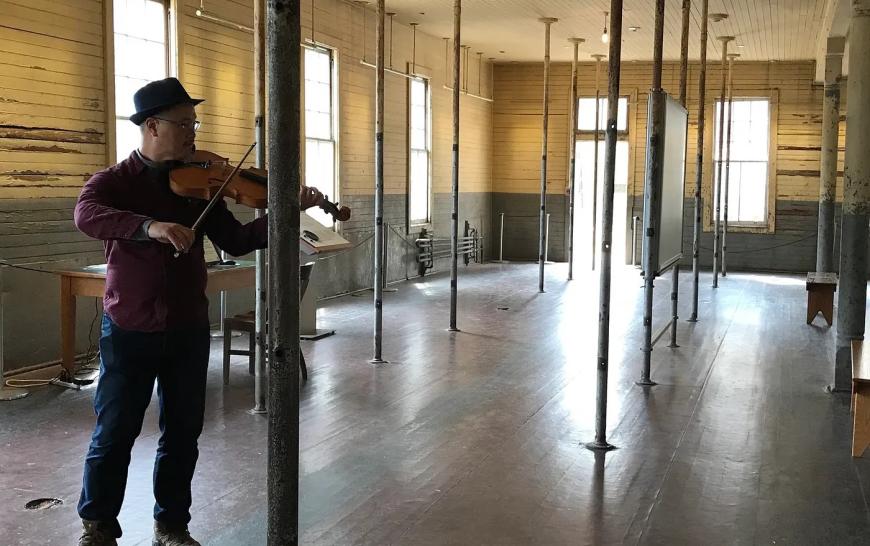
The new series has its roots in a previous Del Sol project titled Angel Island, a 110-minute oratorio for string quartet and choir by Chinese American composer Huang Ruo. Ruo set to music some of the more than 200 Chinese poems found inscribed on the walls of the barracks — haunting messages of pain, frustration, and homesickness that reflect the detainees’ harsh treatment during the years of the Chinese Exclusion Act. The oratorio premiered on-site in 2021, followed by performances in Berkeley, Washington, D.C., Singapore, and three sold-out nights in New York.
Saturday’s concert is set to focus on the experiences of Jewish immigrants. Anchoring the program will be Derek David’s String Quartet No. 4 (“Kaddish”), a pandemic-era piece that traverses profound personal loss through the Kaddish, a Jewish prayer of stoicism and mourning. The single-movement work incorporates two Yiddish folk songs that David, who lives in Boston, found in his study of field recordings.
These are the first explicit references to Yiddish music that David has made in his work, a choice he described as an organic expression of grief rather than a statement of identity. He said he hopes his quartet will help others “to see Yiddish the way I do — as something that’s living and breathing, that has gravitas, power and love.”
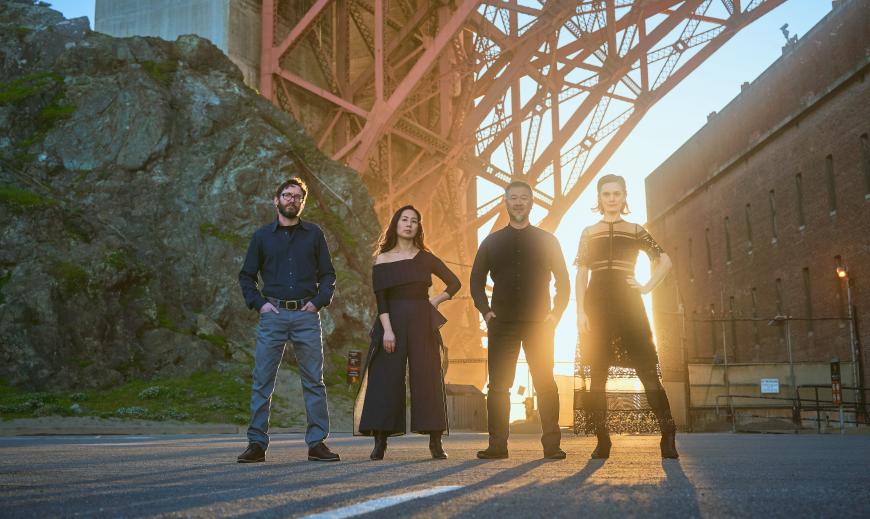
The program is also slated to include additional folk songs sung by David, plus music by Berkeley native Gabriela Lena Frank, who brought El último sueño de Frida y Diego to the San Francisco Opera stage last year, and Russian American violist and composer Lev Zhurbin, as well as by Broadway songwriter Jerome Kern.
Next in the series, a concert on Dec. 14 is intended to highlight Korean immigrants in the Bay Area, including the 1,000 that came through Angel Island. Del Sol plans to perform a quartet by San Francisco composer Jungyoon Wie called Han — a Korean concept that Wie describes in her score note as “a feeling of unresolved anger, grief, and regret that has been prolonged and accumulated over time.”
But the program will balance collective suffering with more hopeful themes. Del Sol violinist Hyeyung Sol Yoon is collaborating with the Jikimee Senior Leadership Program at the Korean Community Center of the East Bay to create pieces inspired by participants’ reflections on joy. The piece is part of a conscious effort to engage with “communities who might not attend our usual concerts, particularly multigenerational Asian communities,” Lee said.
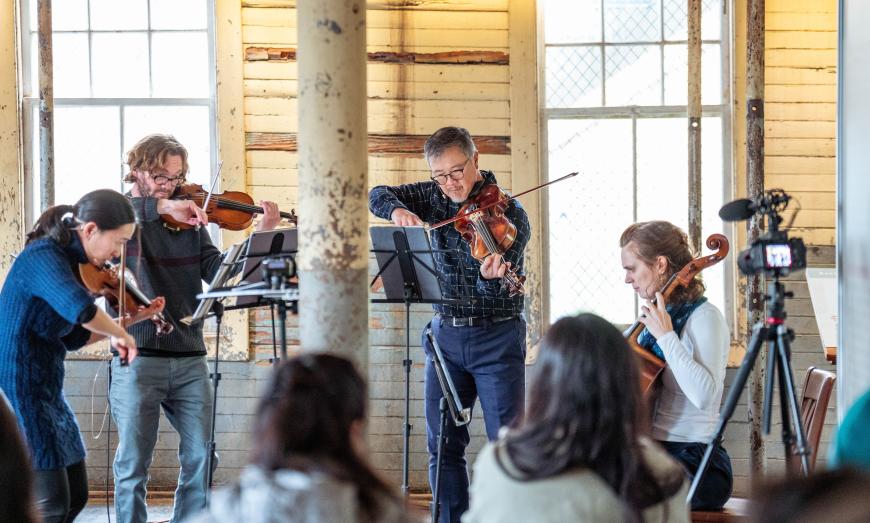
A third concert, initially scheduled for June 2024 but postponed to a date to be announced, is expected to feature Hawaii-based composer Takuma Itoh’s quartet American Postcards: Picture Brides (Hawaii 1908–1924), which tells the story of Japanese women immigrating to the U.S. to marry based solely on the exchange of photographs. Yoon and Lee learned to play the ukulele specifically for the piece — a learning curve that Yoon likens to biking up a San Francisco hill.
For many of Del Sol’s collaborators, the Angel Island initiatives have been personal. Yoon, herself an immigrant to the U.S. and a new Bay Area resident, has been eager to connect with fellow Koreans in the region. Matthew Ozawa, director of the oratorio’s New York production, discovered from his father that his great-grandmother had been held at Angel Island. Other artists’ ancestors had been picture brides.
“We went down a black hole looking up everybody’s ancestry,” Lee said.
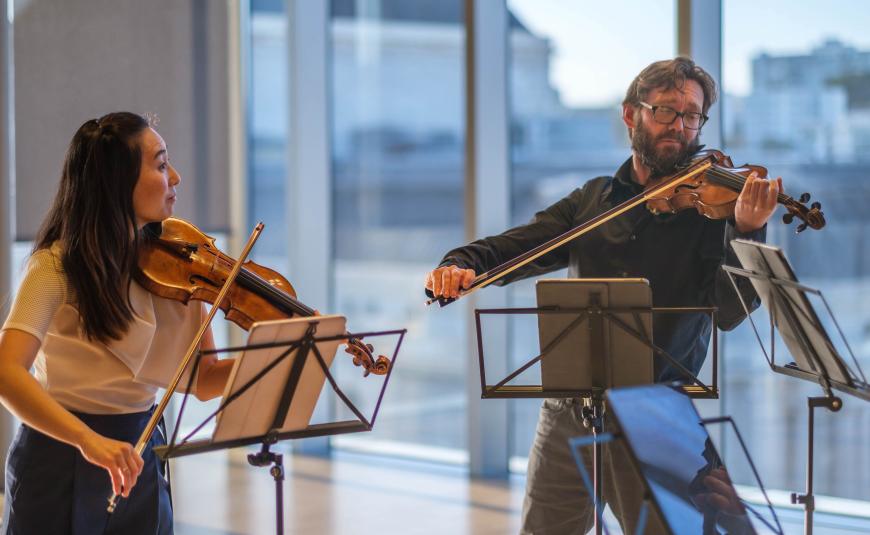
Across the U.S., themes of immigration and identity remain relevant, and Del Sol’s larger Angel Island Project continues to find new iterations, including through a forthcoming production with Oakland Ballet, its award-winning podcast, Sounds Current, and as part of a yearlong series at UC Berkeley. As Lee said, “This project keeps on giving and giving.”
For performers and audiences, getting to Angel Island is an all-day commitment, including a ferry ride. But as Del Sol violinist Benjamin Kreith noted, the journey is worth it.
“It’s about changing perspective,” he said. “I’d never seen San Francisco from that angle. I’d never seen the Richmond Bridge from over there. It changes people’s view of society and their city.”
This story was first published in Datebook in partnership with the San Francisco Chronicle.


